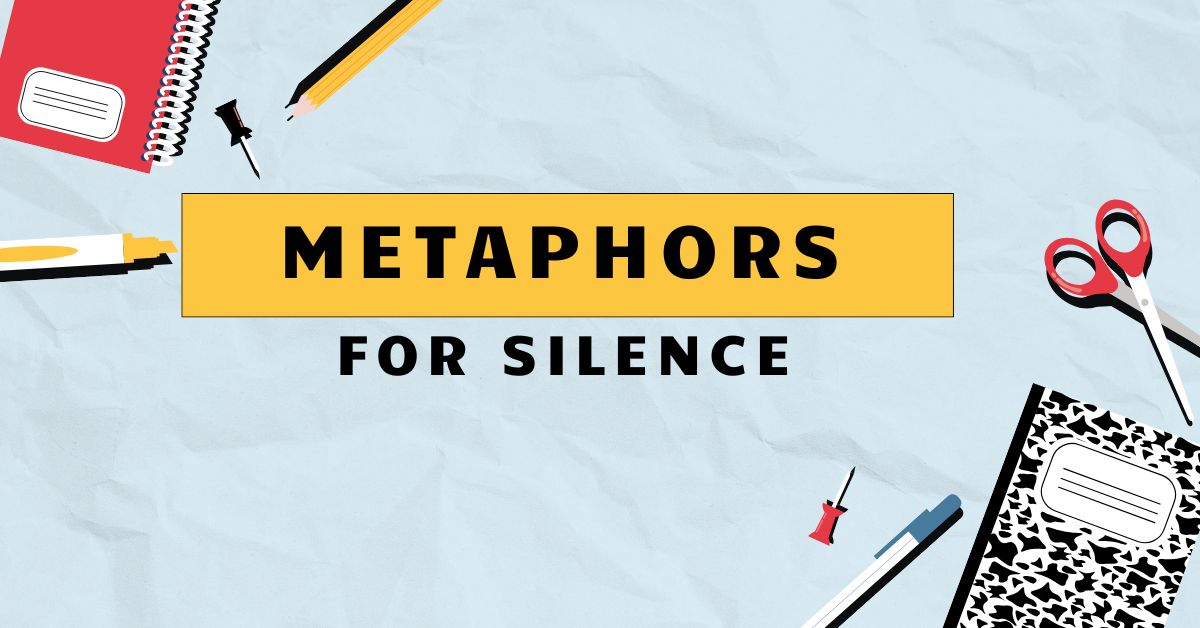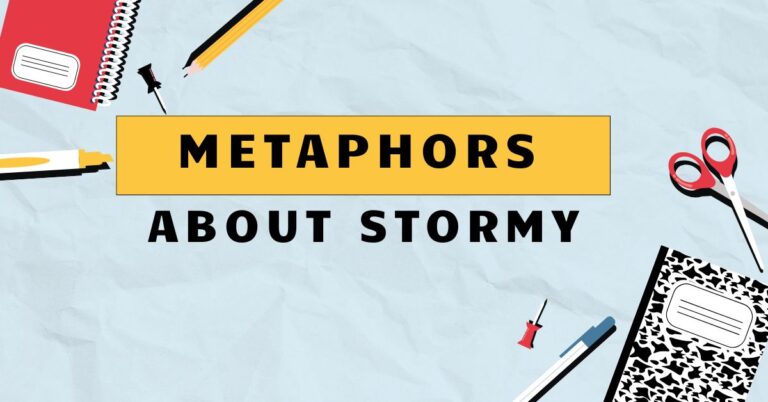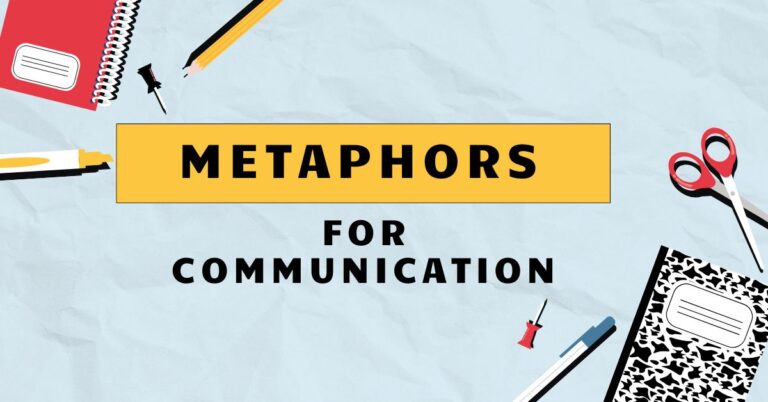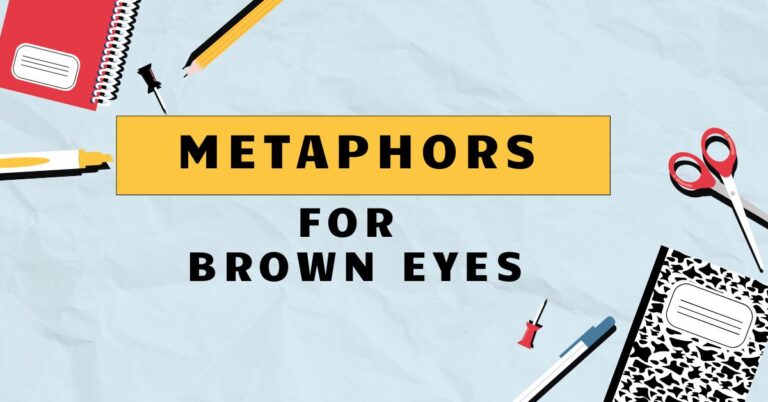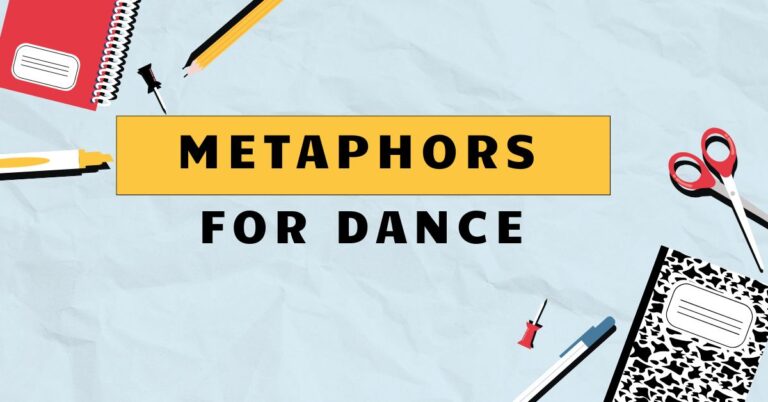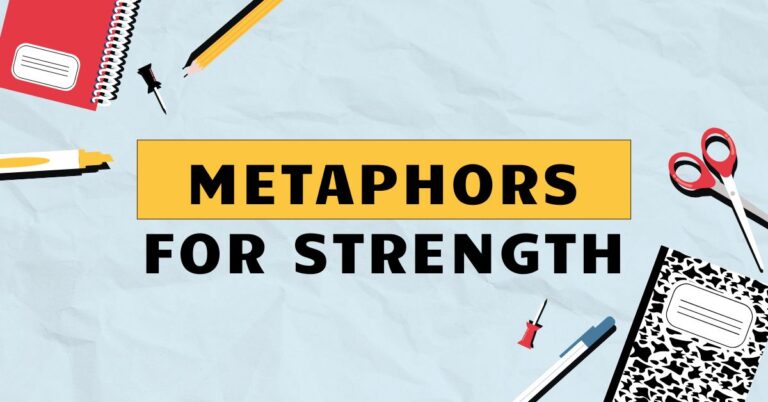41 Metaphors for Silence: A Comprehensive Guide
Silence, often perceived as the absence of sound, is a profound and multifaceted concept that permeates human experience. Understanding how silence is represented through metaphor enhances our ability to interpret literature, poetry, and everyday communication.
This guide explores the diverse metaphors used to describe silence, providing a detailed analysis of their structural elements, usage rules, and common misapplications. This article will benefit students, writers, and anyone interested in deepening their understanding of figurative language and its impact on communication.
This comprehensive guide will equip you with the knowledge to recognize, interpret, and appreciate the power of metaphors for silence in all its forms. By understanding the nuances of these metaphors, you can enhance your own writing and communication skills, adding depth and richness to your expression.
Table of Contents
- Introduction
- Definition of Metaphors for Silence
- Structural Breakdown
- Types or Categories
- Examples
- Usage Rules
- Common Mistakes
- Practice Exercises
- Advanced Topics
- FAQ
- Conclusion
Definition of Metaphors for Silence
A metaphor for silence is a figure of speech that describes silence by comparing it to something else, without using “like” or “as.” This comparison is not literal; instead, it’s designed to create a vivid image or convey a deeper meaning about the nature, quality, or impact of silence. Metaphors for silence can be classified based on the aspect of silence they emphasize, such as its absence of sound, emotional weight, or intentional use.
The function of a metaphor for silence is to evoke a particular feeling or understanding about silence that goes beyond its simple definition. It allows writers and speakers to convey the nuances of silence, such as its potential for tension, peace, or reflection.
The contexts in which metaphors for silence are used vary widely, from literature and poetry to everyday conversation and political discourse.
Structural Breakdown
The structure of a metaphor for silence typically involves two key elements: the tenor and the vehicle. The tenor is the subject being described (in this case, silence), while the vehicle is the object or concept to which silence is being compared.
For example, in the metaphor “Silence was a thick blanket,” the tenor is “silence,” and the vehicle is “a thick blanket.” The comparison suggests that silence is heavy, enveloping, and perhaps comforting or suffocating, depending on the context.
The effectiveness of a metaphor depends on the connection between the tenor and the vehicle. A strong metaphor creates a clear and resonant association, allowing the reader or listener to grasp the intended meaning quickly.
A weak metaphor, on the other hand, may be confusing or ineffective if the connection is too obscure or illogical. Furthermore, the cultural context can significantly influence the interpretation of a metaphor.
What resonates in one culture might not have the same impact or meaning in another.
Types or Categories
Metaphors for silence can be categorized based on the aspect of silence they emphasize. Here are some common types:
Absence of Sound
These metaphors focus on the lack of auditory stimuli, often comparing silence to emptiness or a void. They highlight the physical absence of noise.
Emotional Silence
These metaphors describe silence as a manifestation of emotional states such as grief, anger, or fear. They convey the emotional weight carried by the silence.
Intentional Silence
These metaphors depict silence as a deliberate act or strategy, used for purposes such as contemplation, protest, or manipulation. They emphasize the agency behind the silence.
Environmental Silence
These metaphors relate silence to specific environments or settings, such as a forest, a tomb, or a battlefield. They evoke the atmosphere and mood associated with those places.
Silence as a Physical Entity
These metaphors treat silence as if it were a tangible object or substance, capable of having physical properties such as weight, texture, or color. They personify silence, giving it a presence and impact.
Examples
Here are some examples of metaphors for silence, organized by category:
Absence of Sound Examples
The following examples illustrate metaphors that describe silence as an absence of sound, emphasizing the emptiness and lack of auditory stimuli.
| Metaphor | Explanation |
|---|---|
| Silence was a vacuum. | Implies the complete absence of sound, creating a sense of emptiness. |
| The room was a soundless tomb. | Compares the room to a tomb, emphasizing the deathly stillness. |
| Silence stretched like an empty canvas. | Suggests a blank space devoid of sound, ready to be filled. |
| The theater was a void after the performance. | Highlights the emptiness after the sounds of the performance have ceased. |
| Silence fell like a curtain, muffling all sound. | Depicts silence as an obscuring barrier that blocks out noise. |
| The air was a silent ocean. | Compares the air to an ocean, emphasizing its vastness and lack of sound. |
| Silence was a blank page. | Suggests the absence of any auditory information, like a page waiting to be written on. |
| The forest was a hushed chamber. | Portrays the forest as a closed space filled with quiet. |
| Silence was a bottomless pit. | Emphasizes the depth and unending nature of the quiet. |
| The library was a silent sanctuary. | Depicts the library as a place of refuge characterized by quiet. |
| Silence hung like a motionless cloud. | Suggests a heavy, static presence of quiet. |
| The world was a muted symphony. | Contrasts the usual sounds of the world with their absence. |
| Silence was a frozen lake. | Implies a stillness and lack of movement or sound. |
| The town was a ghost of its former noise. | Suggests the complete disappearance of the town’s usual sounds. |
| Silence was a dark room. | Compares silence to a dark room, emphasizing the absence of light and sound. |
| The studio was a silent box. | Highlights the enclosed and soundless nature of the studio. |
| Silence filled the space like an unplayed song. | Suggests a potential for sound that is never realized. |
| The concert hall was an empty echo chamber. | Emphasizes the absence of sound in a place designed for it. |
| Silence was a still photograph. | Compares silence to a photograph, emphasizing the lack of movement and sound. |
| The valley was a quiet bowl. | Portrays the valley as a container filled with stillness. |
| Silence was a sealed envelope. | Suggests that all sound is contained and cannot escape. |
| The classroom was an auditorium of quiet. | Highlights the unexpected stillness in a place usually filled with sound. |
| Silence was an unwritten story. | Implies the absence of auditory narrative or events. |
| The cave was a silent mouth. | Compares the cave to a mouth, emphasizing the absence of speech and sound. |
| Silence was a forgotten melody. | Suggests a past sound that has faded away. |
Emotional Silence Examples
The following examples illustrate metaphors that describe silence as a manifestation of emotional states, conveying the emotional weight carried by the silence.
| Metaphor | Explanation |
|---|---|
| Silence was a heavy cloak of grief. | Implies that grief is weighing down and enveloping the person. |
| The silence was a wall of anger. | Suggests that anger is creating a barrier, preventing communication. |
| Silence screamed louder than words. | Highlights the intense emotional pain conveyed through silence. |
| Silence was a cold shoulder of resentment. | Depicts the coldness and bitterness resulting from resentment. |
| Silence was a fragile shell of fear. | Implies that fear is creating a protective but easily broken barrier. |
| The silence was a deep well of sorrow. | Suggests that sorrow is profound and unending. |
| Silence was a locked box of secrets. | Depicts the withholding of information and unspoken truths. |
| The silence was a clenched fist of frustration. | Implies that frustration is tightly held and unexpressed. |
| Silence was a tightrope of anxiety. | Suggests a precarious and tense emotional state. |
| Silence was a shroud of despair. | Implies that despair is covering and suffocating the person. |
| The silence was a loaded gun of unspoken words. | Depicts the potential for explosive expression of pent-up emotions. |
| Silence was an ocean of unspoken feelings. | Suggests the vastness and depth of unexpressed emotions. |
| Silence was a shield of indifference. | Implies that indifference is used as a defense mechanism. |
| The silence was a mirror reflecting unspoken truths. | Suggests that silence reveals underlying realities. |
| Silence was a fortress of emotional distance. | Depicts the creation of a barrier to protect oneself from emotional vulnerability. |
| The silence was a breeding ground for resentment. | Suggests that resentment grows and festers in the absence of communication. |
| Silence was a mask hiding deep pain. | Implies that silence is used to conceal inner suffering. |
| The silence was a heavy weight on their hearts. | Depicts the emotional burden carried by the silence. |
| Silence was a cage trapping their true feelings. | Suggests that emotions are confined and unable to be expressed. |
| The silence was a storm brewing with unspoken anger. | Implies that anger is building up and will eventually erupt. |
| Silence was a river of unspoken apologies. | Suggests a flow of regret and remorse that remains unexpressed. |
| The silence was a shadow cast by their fears. | Depicts fear as the cause of the silence. |
| Silence was a ghost haunting their relationship. | Implies that the silence is a lingering and unsettling presence. |
| The silence was a wound festering with unspoken pain. | Suggests that pain is growing worse due to lack of communication. |
| Silence was a void where love used to be. | Depicts the absence of love as a result of the silence. |
Intentional Silence Examples
The following examples illustrate metaphors that depict silence as a deliberate act or strategy, used for purposes such as contemplation, protest, or manipulation.
| Metaphor | Explanation |
|---|---|
| Silence was a strategic retreat. | Implies that silence is used as a way to avoid conflict or gain an advantage. |
| Silence was a form of protest. | Suggests that silence is used to express dissent or opposition. |
| Silence was a tool of manipulation. | Depicts silence as a way to control or influence others. |
| Silence was a moment of contemplation. | Implies that silence is used for reflection and deep thought. |
| Silence was a calculated response. | Suggests that silence is a deliberate and thoughtful reaction. |
| Silence was a weapon of passive aggression. | Depicts silence as a way to express hostility indirectly. |
| Silence was a mask to hide their true intentions. | Implies that silence is used to conceal one’s real motives. |
| Silence was a shield against vulnerability. | Suggests that silence is used to protect oneself from emotional exposure. |
| Silence was a trap set for the unwary. | Depicts silence as a way to deceive or ensnare others. |
| Silence was a pause before the storm. | Implies that silence is a temporary respite before an outburst. |
| Silence was a canvas for interpretation. | Suggests that silence allows others to project their own meanings onto it. |
| Silence was a lesson in patience. | Depicts silence as a way to cultivate endurance and restraint. |
| Silence was a code understood only by a few. | Implies that silence is a form of communication that is not universally accessible. |
| Silence was a bridge to inner peace. | Suggests that silence is a path to tranquility and self-discovery. |
| Silence was a stage for unspoken dramas. | Depicts silence as a space where internal conflicts play out. |
| Silence was a guard protecting their secrets. | Implies that silence is used to safeguard confidential information. |
| Silence was a mirror reflecting their inner thoughts. | Suggests that silence allows for introspection and self-awareness. |
| Silence was a key to unlocking hidden truths. | Depicts silence as a means of uncovering concealed realities. |
| Silence was a dance of unspoken understanding. | Implies that silence is a form of nonverbal communication. |
| Silence was a vow of allegiance. | Suggests that silence is a sign of loyalty and commitment. |
| Silence was a silent scream for attention. | Depicts silence as a paradoxical expression of a need to be noticed. |
| Silence was a puzzle challenging others to solve. | Implies that silence is a form of enigmatic communication. |
| Silence was a filter separating truth from lies. | Suggests that silence allows for discernment and clarity. |
| Silence was a sanctuary offering refuge from chaos. | Depicts silence as a place of safety and tranquility. |
| Silence was a silent judge weighing their actions. | Implies that silence is a form of moral evaluation. |
Environmental Silence Examples
The following examples illustrate metaphors that relate silence to specific environments or settings, evoking the atmosphere and mood associated with those places.
| Metaphor | Explanation |
|---|---|
| The forest was a cathedral of silence. | Implies that the forest is a sacred and quiet place. |
| The tomb was a cradle of silence. | Suggests that the tomb is a place of eternal stillness. |
| The battlefield was a graveyard of silence. | Depicts the battlefield as a place where all sound has been extinguished. |
| The mountain was a sentinel of silence. | Implies that the mountain stands guard over a quiet landscape. |
| The desert was an empire of silence. | Suggests that the desert is a vast and desolate place of quiet. |
| The ocean was a kingdom of silence. | Depicts the ocean depths as a place where sound is muffled and subdued. |
| The library was a haven of silence. | Implies that the library is a safe and quiet place. |
| The monastery was a fortress of silence. | Suggests that the monastery is a place where silence is protected and valued. |
| The village was a ghost town of silence. | Depicts the village as deserted and devoid of sound. |
| The cave was a womb of silence. | Implies that the cave is a place of origin and quietude. |
| The attic was a museum of silence. | Suggests that the attic is a place where forgotten sounds are preserved. |
| The garden was a paradise of silence. | Depicts the garden as a tranquil and peaceful place. |
| The island was a sanctuary of silence. | Implies that the island is a place of refuge and quietude. |
| The theater was a shell of silence. | Suggests that the theater is empty and devoid of its usual sounds. |
| The schoolhouse was a relic of silence. | Depicts the schoolhouse as a place where learning has ceased. |
| The courthouse was a temple of silence. | Implies that the courthouse is a place of solemnity and quietude. |
| The factory was a husk of silence. | Suggests that the factory is no longer producing sound or activity. |
| The stadium was a void of silence. | Depicts the stadium as empty and devoid of its usual sounds. |
| The laboratory was a chamber of silence. | Implies that the laboratory is a place where experiments are conducted in quiet. |
| The observatory was a tower of silence. | Suggests that the observatory is a place where one can contemplate the universe in quiet. |
| The spaceship was a bubble of silence. | Depicts the spaceship as isolated and detached from earthly sounds. |
| The submarine was a capsule of silence. | Implies that the submarine is a place where one is surrounded by the quiet of the ocean depths. |
| The lighthouse was a beacon of silence. | Suggests that the lighthouse guides ships through a quiet and treacherous sea. |
| The cabin was a haven of silence. | Depicts the cabin as a place of refuge and quietude in the wilderness. |
| The train was a tunnel of silence. | Implies that the train journey is a period of quiet contemplation. |
Silence as a Physical Entity Examples
The following examples illustrate metaphors that treat silence as if it were a tangible object or substance, capable of having physical properties such as weight, texture, or color.
| Metaphor | Explanation |
|---|---|
| Silence was a thick fog. | Implies that silence is dense and obscuring. |
| Silence was a heavy blanket. | Suggests that silence is oppressive and suffocating. |
| Silence was a sharp knife. | Depicts silence as painful and cutting. |
| Silence was a cold stone. | Implies that silence is hard and unyielding. |
| Silence was a dark shadow. | Suggests that silence is ominous and foreboding. |
| Silence was a stifling cloud. | Depicts silence as suffocating and oppressive. |
| Silence was a sticky web. | Implies that silence is trapping and difficult to escape. |
| Silence was a crushing weight. | Suggests that silence is burdensome and overwhelming. |
| Silence was a rough texture. | Depicts silence as unpleasant and abrasive. |
| Silence was a solid wall. | Implies that silence is impenetrable and isolating. |
| Silence was a velvet curtain. | Suggests that silence is luxurious but also concealing. |
| Silence was a fragile glass. | Depicts silence as delicate and easily broken. |
| Silence was a tight knot. | Implies that silence is constricting and tense. |
| Silence was a deep abyss. | Suggests that silence is vast and unknowable. |
| Silence was a burning fire. | Depicts silence as intense and consuming. |
| Silence was a frozen statue. | Implies that silence is rigid and unmoving. |
| Silence was a tangled thread. | Suggests that silence is confusing and difficult to unravel. |
| Silence was a locked door. | Depicts silence as preventing access and communication. |
| Silence was a heavy chain. | Implies that silence is binding and restrictive. |
| Silence was a dark pool. | Suggests that silence is mysterious and unsettling. |
| Silence was a concrete slab. | Implies that silence is heavy, dense, and unyielding. |
| Silence was a leaden sky. | Suggests that silence is oppressive and gloomy. |
| Silence was a paper-thin barrier. | Depicts silence as fragile and easily broken. |
| Silence was a rusty lock. | Implies that silence is old and difficult to overcome. |
| Silence was a silk scarf. | Suggests that silence is smooth, elegant, and concealing. |
Usage Rules
When using metaphors for silence, it’s important to follow certain rules to ensure clarity and effectiveness:
- Choose a vehicle that is relevant and understandable. The comparison should be clear and make sense in the context.
- Be consistent with the metaphor. Avoid mixing metaphors or changing the comparison midway through a description.
- Consider the connotations of the vehicle. The vehicle should evoke the desired emotions or associations related to silence.
- Avoid clichés. Opt for fresh and original metaphors that capture the reader’s attention.
- Ensure the metaphor enhances the meaning. The metaphor should add depth and nuance to the description of silence, rather than simply restating the obvious.
Exceptions to these rules may occur in experimental or avant-garde writing, where unconventional metaphors can be used to create a sense of disorientation or ambiguity. However, in most cases, following these guidelines will help ensure that your metaphors for silence are effective and impactful.
Common Mistakes
One common mistake is using a metaphor that is too literal or obvious. For example, saying “Silence was quiet” is redundant and doesn’t add any new information or insight.
Another mistake is using a mixed metaphor, which combines two or more incompatible images. For example, “Silence was a roaring whisper” creates a contradictory and confusing impression.
Finally, using a cliché or overused metaphor can diminish the impact of your writing. For example, “Silence was golden” is a well-worn phrase that may not resonate with readers.
Here are some examples of common mistakes with correct alternatives:
| Incorrect | Correct | Explanation |
|---|---|---|
| Silence was quiet. | Silence was a deep well. | The original is redundant; the corrected version evokes a sense of depth. |
| Silence was a roaring whisper. | Silence was a heavy blanket. | The original is a mixed metaphor; the corrected version provides a consistent image. |
| Silence was golden. | Silence was a taut string. | The original is a cliché; the corrected version offers a fresh and original image. |
Practice Exercises
Now, let’s test your understanding with some practice exercises:
- Identify the metaphor in the following sentence: “Silence was a thick fog, obscuring the truth.”
- What is the tenor and vehicle in the metaphor: “The silence was a wall of anger”?
- Rewrite the sentence “Silence was very quiet” using a more effective metaphor.
- Create a metaphor for silence that describes it as a form of protest.
- Identify the type of metaphor used in the sentence: “The forest was a cathedral of silence.”
- Complete the metaphor: “Silence was like a…”
- Explain the meaning of the metaphor: “Silence was a loaded gun.”
- Correct the mixed metaphor: “Silence was a roaring ocean.”
- Provide a metaphor for silence that evokes a sense of peace and tranquility.
- Analyze the effectiveness of the metaphor: “Silence was a cage.”
Answers:
- The metaphor is “Silence was a thick fog.”
- Tenor: Silence; Vehicle: Wall of anger.
- Silence was a frozen lake. (Example)
- Silence was a silent march. (Example)
- Environmental silence.
- Silence was like a deep breath. (Example)
- Silence was a loaded gun implies suppressed emotions ready to explode.
- Silence was a deep ocean. (Example)
- Silence was a gentle breeze. (Example)
- The metaphor “Silence was a cage” is effective because it conveys a sense of confinement and restriction.
Additional Practice Exercises:
Exercise 1: Fill in the Blanks
| Question | Answer |
|---|---|
| 1. The silence in the room was so thick, it felt like a __________. | blanket |
| 2. Her silence spoke volumes; it was a __________ of unspoken words. | river |
| 3. In the deserted town, silence was the only __________. | resident |
| 4. The mountain stood in __________, a silent guardian of the valley below. | silence |
| 5. After the argument, silence descended like a __________ curtain. | heavy |
| 6. His silence was a __________ , hiding his true feelings from the world. | mask |
| 7. The library was a __________ of silence, a haven for readers. | sanctuary |
| 8. The forest was a __________ of silence, broken only by the rustling leaves. | cathedral |
| 9. The desert stretched out before them, an __________ of silence. | empire |
| 10. The ocean depths were a __________ of silence, untouched by the sounds of the surface. | kingdom |
Exercise 2: Metaphor Identification
| Sentence | Metaphor |
|---|---|
| 1. Silence was a heavy cloak of grief, weighing down her shoulders. | Silence was a heavy cloak of grief. |
| 2. The silence in the room was a wall of anger, separating them from each other. | The silence in the room was a wall of anger. |
| 3. Silence can scream louder than words, conveying emotions that cannot be expressed verbally. | Silence can scream louder than words. |
| 4. His silence was a cold shoulder of resentment, pushing her away. | His silence was a cold shoulder of resentment. |
| 5. Her silence was a fragile shell of fear, protecting her from the world outside. | Her silence was a fragile shell of fear. |
| 6. The silence in the church was a deep well of sorrow, reflecting the grief of the congregation. | The silence in the church was a deep well of sorrow. |
| 7. Their silence was a locked box of secrets, hiding the truth from each other. | Their silence was a locked box of secrets. |
| 8. His silence was a clenched fist of frustration, unable to express his anger. | His silence was a clenched fist of frustration. |
| 9. Her silence was a tightrope of anxiety, balancing on the edge of a breakdown. | Her silence was a tightrope of anxiety. |
| 10. The silence was a shroud of despair, covering everything in darkness. | The silence was a shroud of despair. |
Advanced Topics
For advanced learners, exploring the cultural and historical contexts of metaphors for silence can provide deeper insights. Different cultures may have unique associations with silence, influencing the metaphors used to describe it.
For example, in some Eastern cultures, silence is valued as a sign of wisdom and contemplation, while in some Western cultures, it may be seen as a sign of weakness or lack of communication.
Additionally, analyzing the use of metaphors for silence in literature and poetry can reveal the subtle ways in which writers use figurative language to convey complex emotions and ideas. Examining the works of authors such as Samuel Beckett, who often explored the themes of silence and isolation, can provide valuable insights into the power of metaphors for silence.
Finally, consider the ethical implications of using metaphors for silence in political discourse. Politicians may use metaphors to manipulate public opinion or conceal uncomfortable truths.
Analyzing these rhetorical strategies can help you become a more critical and discerning consumer of information.
FAQ
- What is the difference between a metaphor and a simile?
A metaphor is a direct comparison between two unlike things, while a simile uses “like” or “as” to make the comparison. For example, “Silence was a blanket” (metaphor) vs. “Silence was like a blanket” (simile).
- Why are metaphors for silence important?
Metaphors for silence allow us to express the intangible qualities and emotional weight of silence, adding depth and nuance to our communication. They help us understand and convey the complex nature of silence in various contexts.
- How can I improve my use of metaphors for silence?
Read widely, pay attention to how writers use figurative language, and practice creating your own metaphors. Consider the specific qualities of silence you want to emphasize and choose vehicles that evoke those qualities.
- What are some common pitfalls to avoid when using metaphors?
Avoid using clichés, mixing metaphors, and choosing vehicles that are too literal or obvious. Ensure that your metaphors are relevant, consistent, and enhance the meaning of your writing.

